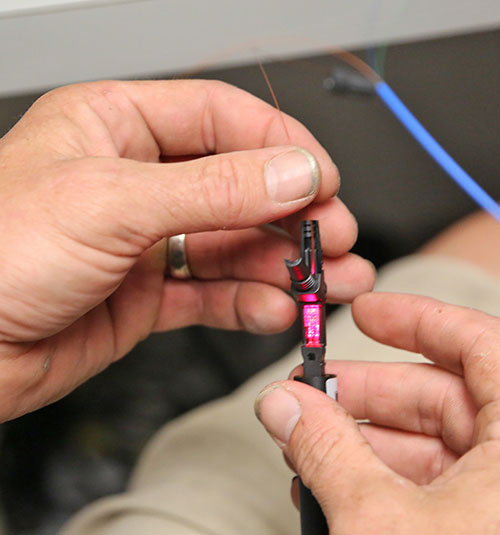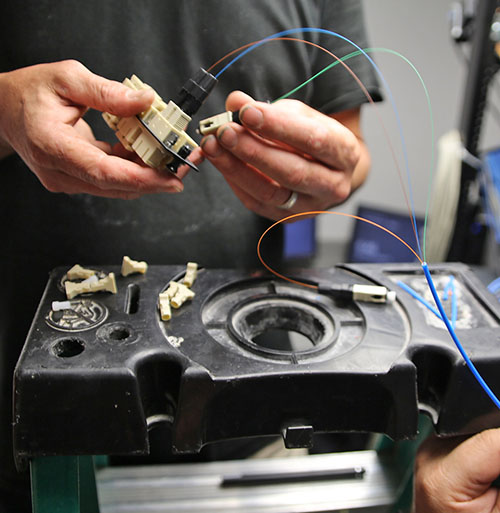Among the many important considerations when installing new network cabling, the type of cabling you’ll use is right near the top. Not all wiring is the same, and the kind you choose for your project can have everything to do with your satisfaction with the end result. In recent years, fiber optic cabling has become a preferred choice because of the many advantages it brings compared to most other types of cable.
What’s different about fiber optic cabling?
The most obvious difference is that with fiber optic cabling, signals are transmitted with light rather than electricity, and light will send information much more quickly. Along with speed, fiber optic cabling won’t encounter electrical interference, making it possible to lay the cable virtually anywhere. Also, fiber optic cable can be run for far greater distances than electric cable without needing to clean or boost the signal.
In today’s interconnected world where data exists as signal packages, most companies need speed, consistency and reliability within their network infrastructures. They get all of this and more when they install fiber optic cabling. As to raw speed, fiber optics can transmit signals at over 10 gigabytes per second. That’s significantly faster than electric cabling, and the signal itself will be much cleaner and stable than anything transmitted electrically.
Fiber optics pros and cons
Is fiber optic cabling right for you? Here are some of the pros and cons that can help you make this decision.
Pros
· The speed, as we’ve discussed, blows away the speed achieved by most other types of wiring
· This cabling can be run for long distances with minimal signal loss or disturbance
· Fiber optic cables produce minimal interference with EMF and other devices
· Installation of fiber optic cabling is easier than standard electrical cabling
· Fiber optic cables provide enhanced security as they don’t produce signals that can be tapped and pirated
· Fiber optic cables do not contain high voltages and thus can be handled safely
Cons
· Fiber optic installations are more expensive than most other cabling installations, but as the technology increases in popularity, prices continue to go down
· Certain components, such as NICs, in a fiber optic network cabling job can be pricey
· Laying fiber optic cabling isn’t a job for your handyman or staff electrician: only trained professionals should oversee the installation
· The likelihood of environmental damage to fiber optic cables is a little greater than with most other types of cabling
· Overall a little more maintenance and repair is necessary with fiber optic cabling with standard electrical cabling
 If you need help understanding more about the pros and cons of fiber optics and want to know your options in making this amazing technology part of your upcoming network cabling project, call High Definition Audio Video of Tampa Bay. We can answer your questions and tell you what you need to know in determining if fiber optic cabling is right for you. Talk with a professional at (813) 321-3110.
If you need help understanding more about the pros and cons of fiber optics and want to know your options in making this amazing technology part of your upcoming network cabling project, call High Definition Audio Video of Tampa Bay. We can answer your questions and tell you what you need to know in determining if fiber optic cabling is right for you. Talk with a professional at (813) 321-3110.


